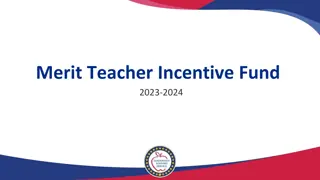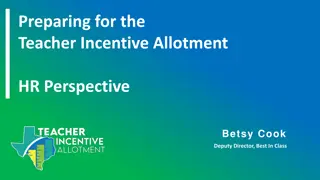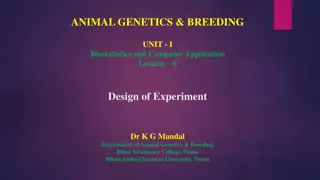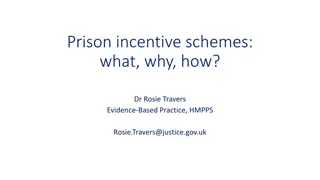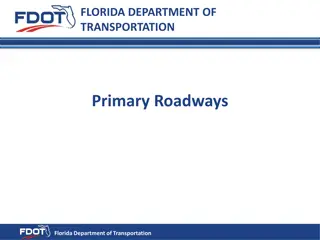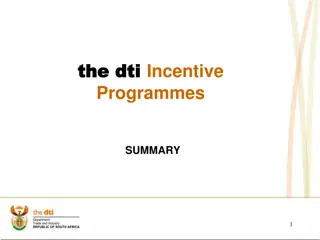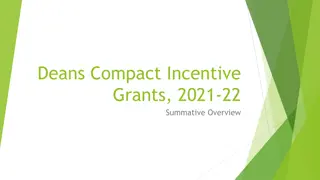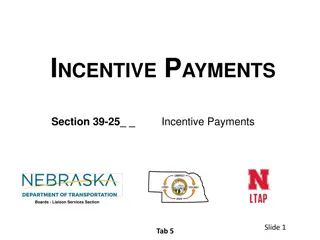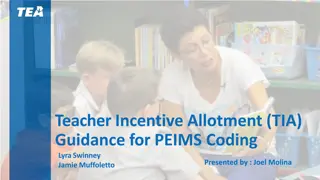Teacher Incentive Allotment
The Teacher Incentive Allotment (TIA) and how it provides sustainable funding for effective teachers to earn a higher income while remaining in the classroom. Customize this deck to tailor it to your district's needs.
Download Presentation

Please find below an Image/Link to download the presentation.
The content on the website is provided AS IS for your information and personal use only. It may not be sold, licensed, or shared on other websites without obtaining consent from the author.If you encounter any issues during the download, it is possible that the publisher has removed the file from their server.
You are allowed to download the files provided on this website for personal or commercial use, subject to the condition that they are used lawfully. All files are the property of their respective owners.
The content on the website is provided AS IS for your information and personal use only. It may not be sold, licensed, or shared on other websites without obtaining consent from the author.
E N D
Presentation Transcript
Teacher Incentive Allotment [PRESENTATION NAME] | December 29, 2022
How to Use This Deck This slide deck may be used for TIA engagement sessions with teachers, campus administrators, school boards, and other stakeholders. The What is TIA section may be used as is or you can add in your own district details as needed. The Why TIA is Right for [YOUR] District, [YOUR] ISD s Planned Local Designation System, and Next Steps sections may be used as templates but should be tailored to your own district s plan. See the notes section of each slide for further directions.
Customize and Tailor to Your District All images are from open sources and may be used or can be replaced by district owned images. Right click the image and choose Change Picture. Keep the colors in the deck or update colors to those of your district. Add your district logo to the title slide. Add your district information to any areas with [BRACKETS]. Remember to remove the brackets. Add, remove, and re-order slides based on your audience, timing of the session, and goals of your meeting.
The Teacher Incentive Allotment (TIA) provides an accessible pathway for effective teachers to earn a higher income while remaining in the classroom. Sustainable funding for teachers written into statute with no caps on teacher designations or allotment funds.
Local Designation System Teacher Incentive Allotment The local designation system allows districts to identify and designate highly effective teachers using single or multi-year appraisal data. Teacher Incentive Allotments allow districts employing designated teachers to receive additional funding through the Foundation School Program. TIA Consists of Two Separate Components Based in Statute
How TIA Works Three Levels of Designation $3,000 to $32,000 Prioritizes Hard- to-Staff Positions Teacher Focused Funding Five Year Validity Annual additional funding for each designated teacher Greater funding for high-needs and rural campuses 90% of all TIA funds go towards teacher pay Teachers retain designations for 5 years regardless of placement Recognized Exemplary Master
TIA Provides Extra Funding Per Designated Teacher to Districts With More Money for High-Needs and Rural Campuses $3-$9K $6-$18K Allotments are based on teacher designation level, campus socioeconomic level, and campus rural status. $12-$32K
2021-2022 TIA By the Numbers 373 Participating Districts 6,246 Designated Teachers $55,437,701 Allotment Funds Distributed
All teaching assignments can be eligible for TIA as long as they have valid and reliable data from teacher observation scores and student growth data. Some districts choose to start with a subset of eligible assignments and then expand their system later. At Its Core, A Local Designation System is Comprised of Three Major Components ELIGIBLE ASSIGNMENTS & CAMPUSES Teacher observation data, student growth data, and data from optional components the district chooses to include in their system make up teacher performance data. Districts use the performance data to determine teacher designations. TEACHER PERFORMANCE DATA Districts are required to spend at least 90% of their allotment funds on teacher compensation on the campus where the designated teacher works. Districts may use up to 10% for costs associated with implementing a local designation system or supporting teachers in earning a designation. COMPENSATION PLAN
Three-Year, Two-Step Approval Process There is a two-step approval process to building an approved local designation system that spans three years. Year 1 Year 2 Year 3 Pre-Application Districts engage with stakeholders and develop their local designation system. System Application Districts submit their application to TEA after building their system then submit the TIA Teacher Buy-In Survey to TTU. Data Capture Year Districts implement their system and track student growth and teacher observations for a full school year. Data Submission Districts submit prior year data and proposed designations to TTU for data validation. TEA reviews to determine final approval.
Every Teacher Has The Potential to Be Designated Districts choose when and how to roll out eligible assignments with stakeholder feedback and district needs in mind. In order to be designated, teachers must at minimum: Be teaching in an eligible assignment Be employed and compensated by the recommending district in a teacher role for a creditable year of service Meet the district s designation criteria outlined in their local designation system which MUST include student growth data and teacher observation data
Districts Report Dimension- Level Appraisal Data From All Observable Domains TIA aligns the teacher observation requirements to T-TESS. Districts that use T-TESS for their appraisal system already incorporate the requirements needed for TIA. Crosswalks were created for Danielson, Marzano, and NIET TAP. Locally created rubrics may be used but must follow statute and a custom crosswalk. Appraisal Waivers are not allowed for any teacher in an eligible assignment during the Data Capture Year Minimum of 3 on all observable dimensions or proficient is required Ratings from Domains 2 and 3 are used when determining designations
Measuring Individual Student Growth NOT Achievement Student growth is measured by the teacher s percentage of students who meet or exceed an expected growth target over the course of a single school year. Rather than using the magnitude of growth, effectiveness is measured by the impact teachers have on all students by setting individualized growth targets.
Student Learning Objectives (SLOs) TIA Recognizes Four Different Student Growth Measures Portfolios Measures a student s movement along a skill progression rubric with a collection of standards-aligned artifacts. Teachers set individual student growth targets and evaluate each student using Body of Evidence. Aligned with TexasSLO.org. Multiple growth measures may be used for a single eligible assignment. Pre-Test Post-Test Value-Added Measures Involve the administration of a beginning of year pre-test and an end of year post-test. Tests must align directly to the standards of the course. Sets predicted scores based on multiple years of historical testing data across multiple contents using statistical modeling.
Districts May Incorporate Optional Components to Their System Usually done to align with district goals. Examples may include teacher attendance, mentorship, leadership roles, etc.
90% Of All TIA Funds Must Go to Teacher Compensation Teachers do not apply for TIA. Unlike previous education programs, the Teacher Incentive Allotments are additional state funding written into statute allowing for sustainable funding. There are no caps on teacher designations or allotment funds.
Statewide Performance Standards Guide Designations Districts set local cut points for each level of designation. Any teacher that meets a local designation system s eligibility requirements and the minimum proficiency observation ratings may be submitted for designation. Districts may find that they have more or less than the numbers represented. TEACHER OBSERVATION PERFORMANCE STANDARDS STUDENT GROWTH PERFORMANCE STANDARTS DESIGNATION LEVEL STATEWIDE PERCENTAGES Recognized Top 33% 3.7 or 74% of possible points 55% met or exceeded Exemplary Top 20% 3.9 or 78% of possible points 60% met or exceeded Master Top 5% 4.5 or 90% of possible points 70% met or exceeded
Allotment Funding Amounts May Differ Per Campus Base Allotment Campus Socioeconomic Level Campus Rural Status Each designation level starts with a base amount and a multiplier rate. Socioeconomic levels are determined by assigning a point value to each student based on the Compensatory Education block tier. Students at rural campuses will receive a 2-tier boost to their point value with a max value of Tier 5.
Why TIA? WHY TIA IS RIGHT FOR [YOUR] ISD
TIA Compliments & Enhances Established District Systems & Goals
Strengthen Student Outcomes Improve Teacher Retention Increase Recruitment Rates Reward Quality Instruction Incentivize Hard-to- Staff Positions & High-Needs Schools Support Educator Development Encourage Professional Collaboration Maintain a Competitive Market
[WRITTEN REASON] In your own words, explain why your district is pursuing TIA, how it helps your district/stakeholders/students, and aligns with district goals.
[YOUR] ISD OUR PLANNED LOCAL DESIGNATION SYSTEM
Anticipated Funding $[X]-$[X]K $[X]-$[XX]K Allotments are based on teacher designation level, campus socioeconomic level, and campus rural status. Each campus may produce a unique allotment value. $[XX]-$[XX]K
Our Goal is to Have Every Teaching Assignment Eligible By [DATE] Write how this aligns with your district s vision and goals.
Eligible Assignments List eligible assignments
Performance Data: Teacher Observation [DISTRICT S TEACHER OBSERVATION RUBRIC] Districts will only report ratings from observable dimensions [LIST OR PROVIDE SUPPLEMENTAL LIST, FOR T-TESS DOMAINS 2&3] Teachers in eligible assignments will receive [# OF OBSERVATIONS] observations [METHOD FOR CALCULATING FINAL SCORE IN EACH DIMENSION, IF MULTIPLE OBSERVATIONS] Observation data is stored and accessed in [DATA MANAGEMENT PLATFORM] Appraisal waivers not permitted for teachers in eligible assignments during the Data Capture Year
Performance Data: Student Growth ELIGIBLE TEACHING ASSIGNMENT(S) STUDENT GROWTH MEASURE
How [YOUR] ISD Measures Student Growth Student growth is reported as the percentage of each teacher's students who meet or exceed their individual expected growth target. [when growth measures are administered] [method for calculating growth]
How Funds Will Be Spent XX% DESIGNATED TEACHERS XX% [INSERT IF USING] XX% DISTRICT USE
How the District Funds Will Be Spent [INSERT DISTRICT DECISIONS ON HOW THE 10% WILL BE USED]
Our TIA Spending Plan Adds Funds as Stipends Stipends are paid to both the designated teachers generating the allotment funds as well as any of their support staff. [XX% to designated teachers and XX% split among supporting teachers]. PAYMENT SCHEDULE RECOGNIZED EXEMPLARY MASTER Designated Teacher Designated Teacher Designated Teacher Funds Paid To- Support Team Support Team Support Team Total Stipend Amount $2,400 $600 $4,800 $1,200 $9,600 $2,400 Payment 1: [DATE] $800 $200 $1,200 $400 $3,000 $800 Payment 2: [DATE] $1,600 $400 $3,600 $800 $6,600 $1,600
Our TIA Spending Plan Uses Salary Raises STEP LANES DESIGNATED TEACHER INCREASE - BA MA Ph.D. Recognized Exemplary Master 1 $32,000 $38,000 $45,000 $3,000 $6,000 $12,000 2 $32, 800 $38, 950 $46,125 $3,000 $6,000 $12,000 District pays annual raise only to designated teachers equal to the amount generated by each designated teacher. 3 $33, 620 $39,924 $47,278 $3,000 $6,000 $12,000 28 $62,330 $74,016 $87,651 $3,000 $6,000 $12,000 29 $63,888 $75,867 $89,842 $3,000 $6,000 $12,000 30 $65,485 $77,763 $92,088 $3,000 $6,000 $12,000
Our TIA Spending Plan Redesigns the District Salary Schedule SALARY SCHEDULE BASE SALARY Master $105,000 Exemplary $90,000 Recognized $70,000 Proficient $60,000 Base salaries start at Novice for new teachers and go to Master for the highest performing teachers. Teachers in hard-to-staff schools and subjects will receive a stipend. Progressing $55,000 Novice $45,000 STIPENDS FOR OTHER ELIGIBLE TEACHERS Hard-to-staff School $3,000 Hard-to-staff Subjects $3,000
Designation Eligibility % OF STUDENTS WHO MEET/EXCEED GROWTH TARGETS TEACHER OBSERVATION SCORE [OPTIONAL DISTRICT COMPONENT] DESIGNATION LEVEL Recognized Exemplary Master
Our Districts Estimated Timeline April 2023 August 2023 2023-2024 SY October 2024 April 2025 August 2025 Notification of Application Acceptance Data Capture Year Data Notification of System Approval 2024-25 Funds Paid to Teachers System Application Submission
Phased-In Approach 2022-23 SY 2023-24 SY 2024-25 SY 2025-26 SY 2026-26 SY Data Capture Year PHASE 1 Application Data Submission Compensation Expansions/ Modifications Data Capture Year PHASE 2 Data Submission Compensation Data Capture Year Expansions/ Modifications Data Submission PHASE 3
Feedback and Q&A















